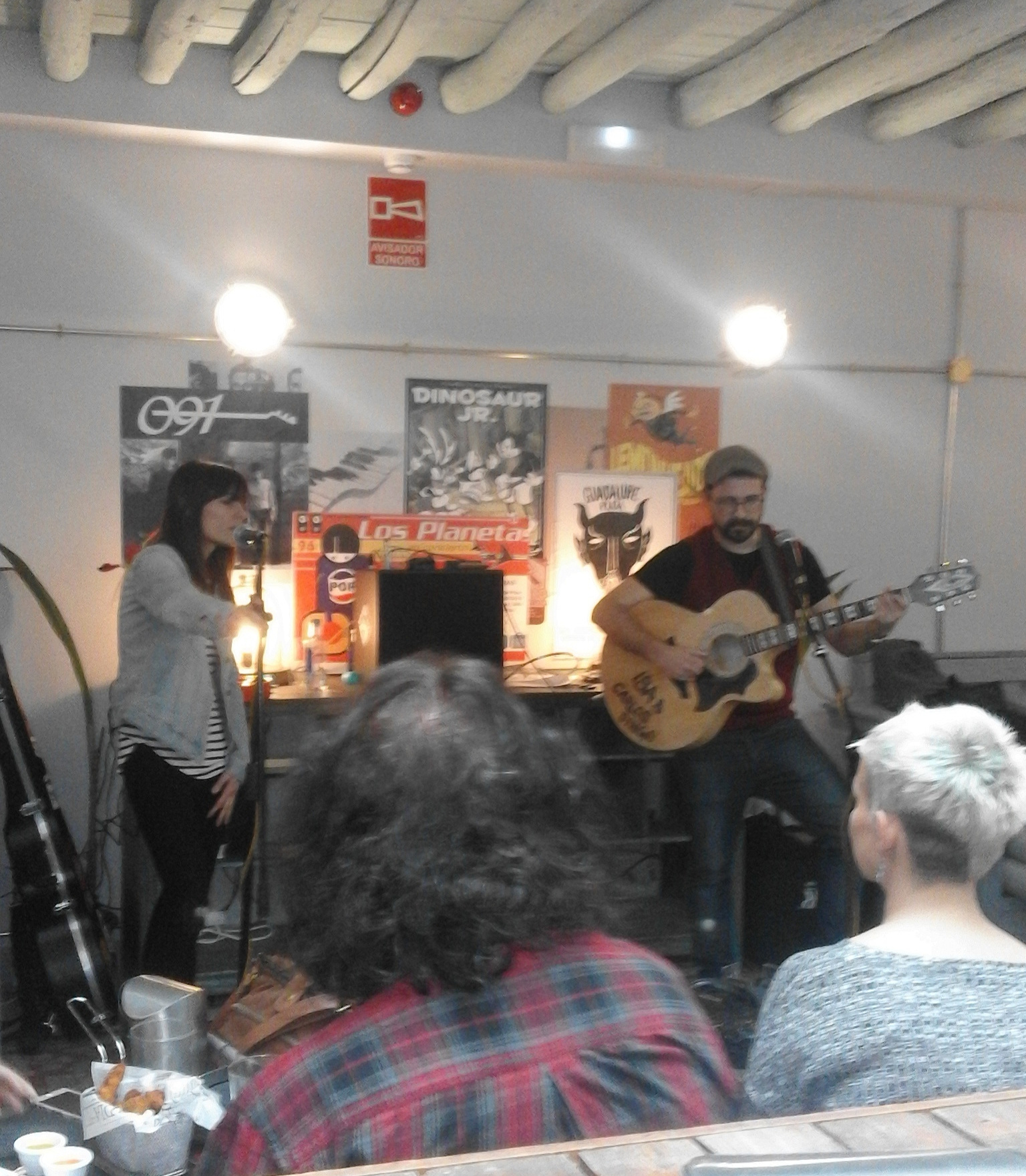
Favorite Resources for Learning through Spanish Entertainment
Dear Kara,
Earlier this week, we talked about how using original Spanish-language entertainment can be a great way to expand your language-learning as well as your understanding of Spanish-speaking cultures. If you haven’t already, check out that article first because today we’re getting specific and diving into our favorite resources and recommendations for some of the particular categories we explored last time.
Public TV
 One of the things I learned when living with Spanish roommates was that the television is generally on and is also generally the place people gather in a Spanish home. This experience itself was a language-learning opportunity (especially when trying to simultaneously follow along with what was being said in the show as well as the living room). Although a lot of the times we watched The Simpsons, I would not put originally English-language shows on my list. Instead, try out some of these options:
One of the things I learned when living with Spanish roommates was that the television is generally on and is also generally the place people gather in a Spanish home. This experience itself was a language-learning opportunity (especially when trying to simultaneously follow along with what was being said in the show as well as the living room). Although a lot of the times we watched The Simpsons, I would not put originally English-language shows on my list. Instead, try out some of these options:
Beginner– Cámbiame: Now, even the roommates I sometimes watched this show didn’t consider it to be high-quality as it’s similar to something like Extreme Makeover and revolves simply around changing someone’s wardrobe. However, it’s a great place to start watching TV in Spanish as it’s very visual and you can easily follow along even if you don’t catch everything being said.
Intermediate– La Que Se Avecina: This series is a comical depiction of apartment-living in Spain. With (currently) eleven seasons of entertainment you can usually find reruns of this show multiple times a day on public TV with new episodes once a week. While confusing at first because there are so many characters, with a little perseverance you will come to know and love all the crazy neighbors.
Advanced– First Dates: This show is exactly what it sounds like and chronicles real people who have been set up for a first date. It’s good for language-learning as it mostly involves small talk and get-to-know-you topics, which can provide useful expressions you’ll want to know. Simply be aware that First Dates showcases people from all around Spain, often with very different (over the top) dialects, speaking very quickly. You probably won’t catch on to everything being said but it’s a good practice for real-life situations with Spaniards.
 Live entertainment
Live entertainment
Beginner- Concerts: If you can find a less touristy flamenco show or another type of live concert (actually quite common if you know which bars to go to and when), this is a great way to engage with the language and culture. Not only can you take in the lyrics of the songs but you can also pick up on the common expressions used when the artists engage with the crowd and vice versa.
Intermediate- Theater Productions: I love a good play and going to a Spanish-language production is always fun. Whether you choose to go to a low-key community production or a bigger venue like the theaters in big cities like Madrid and Barcelona, you’re sure to find an interesting show. Stay tuned for a full account of my recent experience in Barcelona coming soon!
Advanced- Comedy and Improv Shows: Another form of live entertainment that is becoming more and more popular in Spain is stand-up comedy and improv. While this is light-hearted and easy-to-consume entertainment for native-speakers, I recommend you really feel confident with Spanish before trying to enjoy it yourself. Keep in mind that many jokes are culturally-relevant and the play-on-words may not seem funny to you unless you deeply understand the language. Still, if you get invited to such a show I recommend you take the opportunity (just try not to get frustrated when people keep laughing at things you don’t quite understand).
Netflix
Beginner- Merlí: So, technically this show, which is set in Barcelona, is an originally Catalan-language production. However, the majority of the characters dub over their own voices into Spanish so it is still pretty authentic. I enjoy this one because, although it also has many characters, it’s a bit easier to follow as the main characters are high school students and their unconventional philosophy teacher, making it a bit lighter than the recommendations below.
 Intermediate- Las Chicas del Cable: This series is intriguing due to its historical context, with the story unfolding at the start of the Telefonica company which is still Spain’s phone and internet company to this day. As with most Spanish dramas, it can be hard to follow at times, especially because the main character is disguising herself as someone else and trying to keep her past a secret, but it’s great if you allow yourself time to get into it.
Intermediate- Las Chicas del Cable: This series is intriguing due to its historical context, with the story unfolding at the start of the Telefonica company which is still Spain’s phone and internet company to this day. As with most Spanish dramas, it can be hard to follow at times, especially because the main character is disguising herself as someone else and trying to keep her past a secret, but it’s great if you allow yourself time to get into it.
Advanced- Casa de Papel: This show has become an international favorite since it hit Netflix (the first two seasons originally ran on Spanish TV) but resist the urge to watch the English-language version and watch the original instead! The series follows the intricate plot of a team of criminals who overtake the Royal Mint of Spain, taking all of the employees and visitors hostage as they print more and more money. It’s a complex plot to follow but it’s a lot of fun and you’ll quickly start to pick up the different characters’ quirks and personalities.
YouTube Vloggers
Beginner- Mi Familia Guiri: The main vlogger on this account is actually an American girl but she has been living in Spain (married to a Spaniard) for years and so her Spanish is still really good. In fact, this could be a better place for you to start with non-language-learning based videos as she speaks much more clearly than most native-Spanish speakers, even throwing in some English along the way. I find her vlogs to be a lot of fun as I can often relate to the topics she talks about being an expat living in Spain.
 Advanced- Yellow Mellow: I will be honest with you, this girl talks really fast and uses a lot of humor and idioms. It can be hard to follow for those who are new to the accent however it’s a great resource if you find yourself living in Spain and interested in getting better at following along. She posts videos about a plethora of topics from music to comical sketches to day-in-the-life vlogs.
Advanced- Yellow Mellow: I will be honest with you, this girl talks really fast and uses a lot of humor and idioms. It can be hard to follow for those who are new to the accent however it’s a great resource if you find yourself living in Spain and interested in getting better at following along. She posts videos about a plethora of topics from music to comical sketches to day-in-the-life vlogs.
Podcasts
 Beginner– Your Spanish Guide: David Manrique is an excellent Spanish teacher (native speaker) who offers courses and Skype lessons from Madrid at very reasonable prices. However, he also offers lots of free content on his Instagram account and through his website, including his podcast (approximately 10 mins each) which ranges from topics like vocabulary explanations, songs, and insights into life in Spain.
Beginner– Your Spanish Guide: David Manrique is an excellent Spanish teacher (native speaker) who offers courses and Skype lessons from Madrid at very reasonable prices. However, he also offers lots of free content on his Instagram account and through his website, including his podcast (approximately 10 mins each) which ranges from topics like vocabulary explanations, songs, and insights into life in Spain.
Advanced– Radio Ambulante: Unlike most of our other recommendations, this resource is actually based in Latin-American Spanish, providing a different dialect of the language as well as very different cultural insights. It’s much longer than Your Spanish Guide’s podcasts but the narrative stories allow you to immerse deeply in the story. You can also follow along with free transcripts in both Spanish and English.
 And in case you were wondering where our book recommendations are, they’re missing from this list because we actually wrote an entire other post on that! Check it out here.
And in case you were wondering where our book recommendations are, they’re missing from this list because we actually wrote an entire other post on that! Check it out here.
Of course, this list of resources is by no means inclusive of each and every Spanish-language media we have tried and liked but we hope that it provides some good advice and places for you to get started. Please reach out if you have any questions or recommendations of your own; we love to hear from you!
Sincerely,
Spain





2 Comments
Felipe Pezzin
Great tips, I going to take a look on it but there is another one that i like so much, the blog https://www.realfastspanish.com/blog
Sincerely, Spain
Looks like a great resource I hadn’t personally used before. Thanks for sharing!!